lifelines
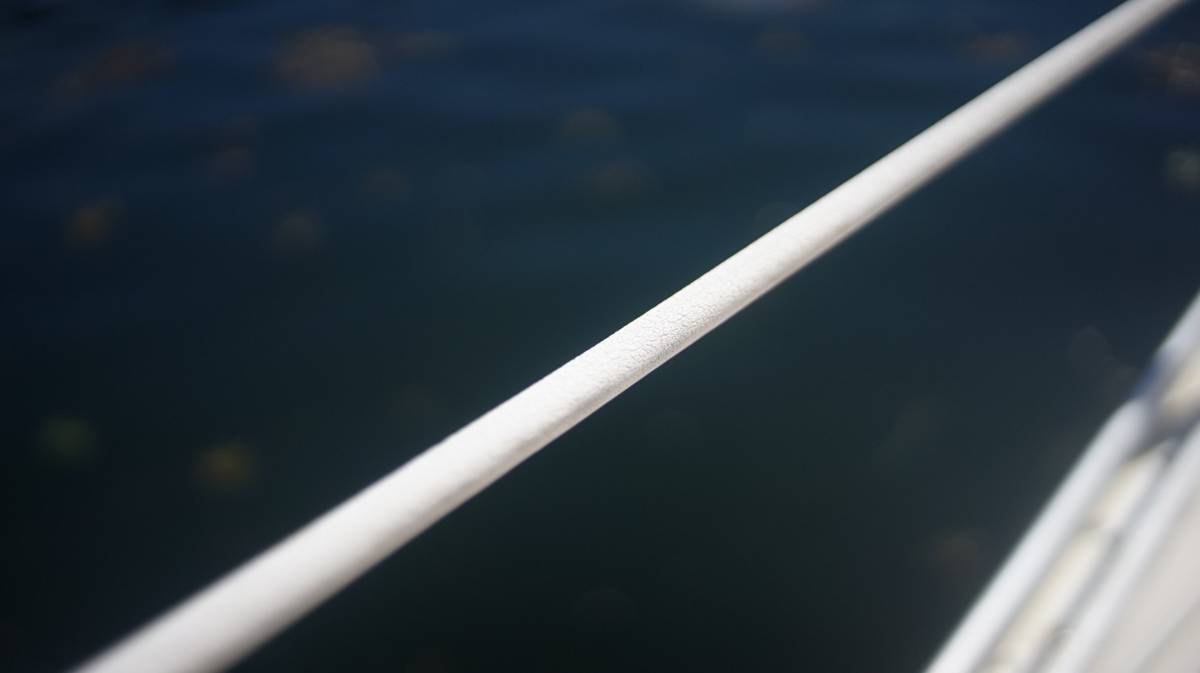
2022.09.16
Cortes Island, BC, Canada.
Click below dates for more recent updates:
One morning anchored in hathayim marine park, we were sitting on deck with our feet pressing up against the lifelines. We like to take our coffee up on deck when the weather's nice. With our eyes on the lifelines we said: "I wonder if the metal is all corroded under the plastic covering..."
On a sailboat, lifelines are important. They act as handholds when sailing, and in some instances it is the thing that can keep you from falling overboard. Other sailors had warned us that if water could get under the covering that it could corrode the metal. The lifeline coverings on Pino were old, cracked in a few places with some red staining the surface. We talked about removing it before, but never found the time. We figured that there would be some corrosion, given the age of the boat, and so on that morning we decided to strip the covering off to find out how bad it was.
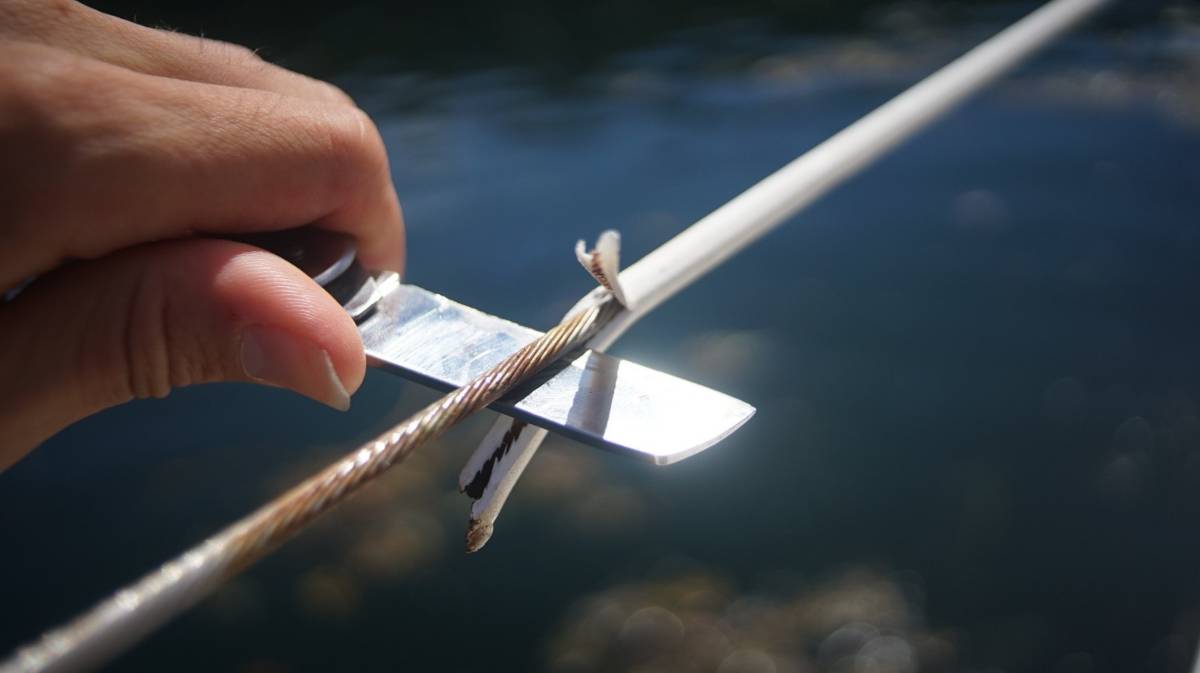
We each grabbed a knife, and went to work. The plastic came off easy, and we saw the damage underneath. Some of the wires had cuts.
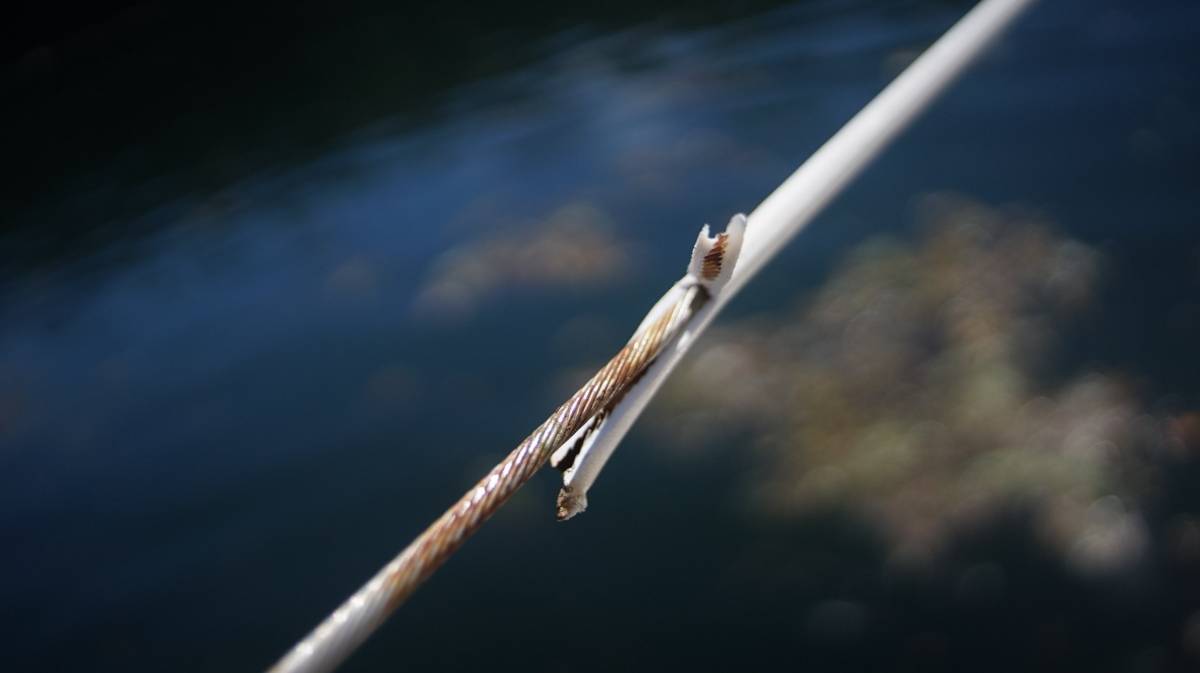
Stainless steel wire is made up of many more smaller wires, like ropes. If one is cut, the rest can still hold the line but the more cuts there are the weaker it becomes, and if the wire is under load then it can break. Our lifelines weren't as damaged as we thought, but we would not trust them to go offshore.
We removed all of the plastic covering, with plans to replace the lifelines sometime in 2023. Replacing the wire itself is not costly, but the hardware linking them to the stanchions and the swaging (how you connect the wire to the hardware that connects to the stanchions) are not cheap. We are considering using synthetic material.
Stainless Steel wire lasts a heck of a long time, but we like the idea of being able to make the terminations ourselves. Stainless Steel wire as lifelines supposedly can have a lifespan of 10 years(especially in sunny places), ours are way past their prime. We are not certain if the synthetic lifelines will last that long, but we will give it a shot.
2023.11.23
Victoria, BC, Canada.
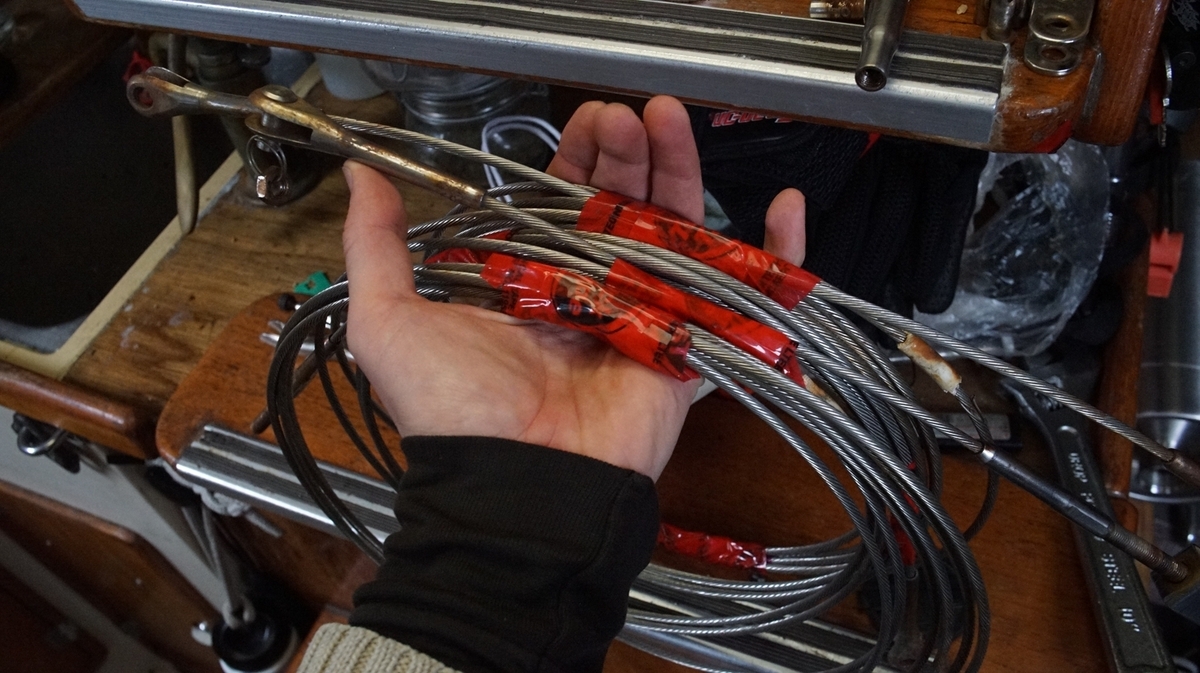
It's time. Today we took off all of the lower lifelines so we can start replacing them. We're replacing these first because the upper ones currently have christmas lines hanging onto them(with a holiday event coming soon).
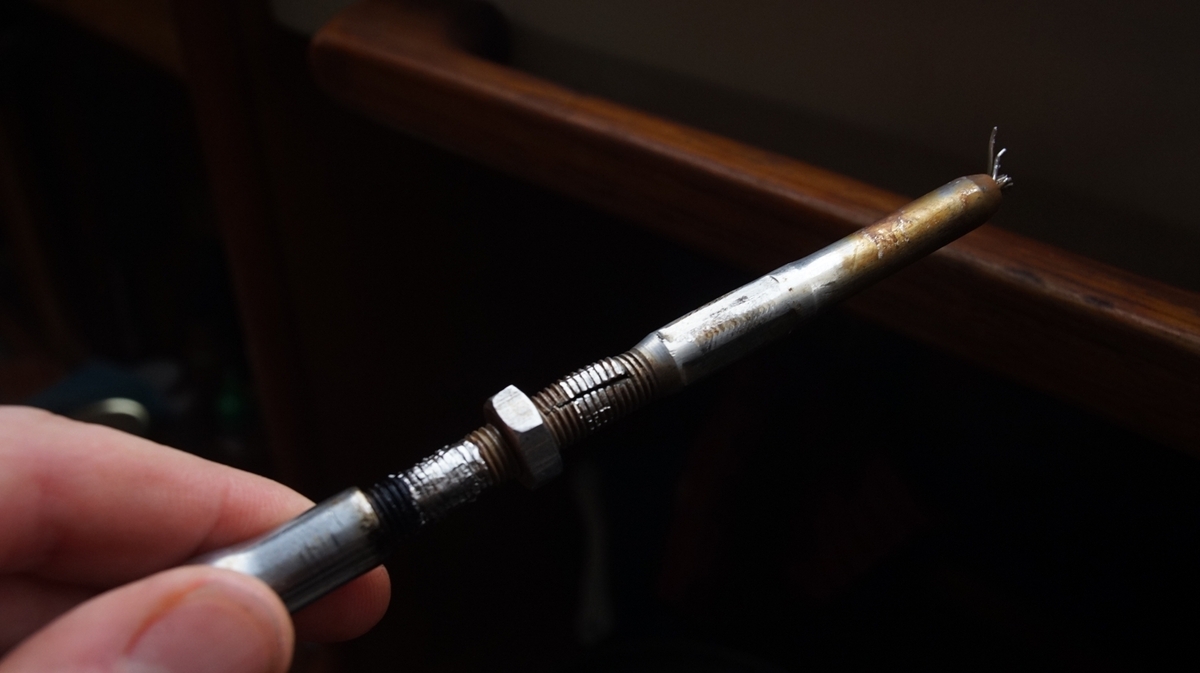
Many of the wires had meat hooks(wires that have parted), or cracks—dangerous stuff.
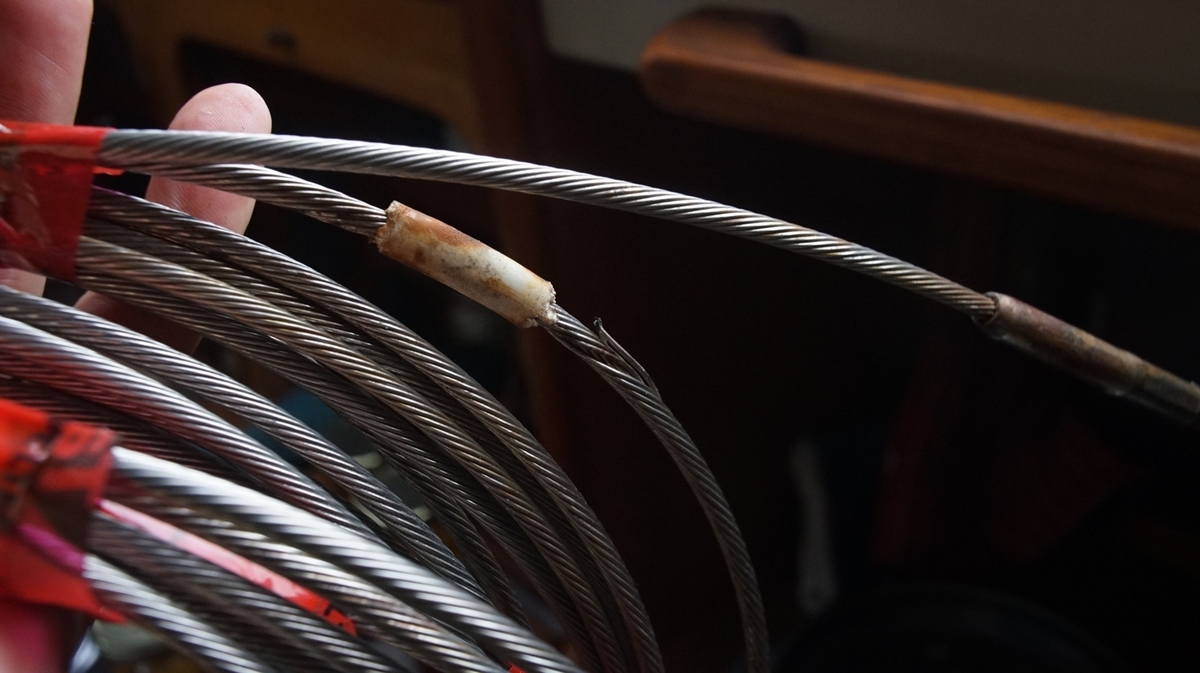
2023.12.06
Victoria, BC, Canada.
We bought some lengths of 5 mm Amsteel for our lifelines. We also decided to use hardware(8 jaw & jaw turnbuckles) to link up the lifeline to the stanchions because at least one of two ends needs to be adjustable so the lifeline can be tightened as desired(the lines will stretch before settling in). All bits of Amsteel will terminate with eye splices(with thimbles), linked up to one side with jaw & jaw turnbuckles and with shackles on the other ends.
An Amsteel lifeline installation will require an initial break-in period while the ropes work their way through "primary creep", which involved re-tensioning the line over the course of a few hours to a few days.
What is creep? "Creep is defined as the continued extension of a material when subjected to constant, long-term static loading. For a rope, creep is the length/rate at which the fibers in the rope stretch irreversibly over time. Creep should not be confused with constructional elongation as creep relates to the fiber in the rope and not to rope construction. All synthetic fibers exhibit some degree of creep and not all irreversible elongation of a new rope is due to creep (constructional setting, splice slippage, etc). Typically creep will require that ropes be re-tensioned as the elongation increases and/or line tension decreases." [Source](PDF).
Creep is only a problem if the line is under long-term static loads, and if the service life of the line is on par with the creep life of the fiber. If looking at SK-75 versus SK-78, the latter creeps more slowly than SK-75 and would have a longer service life.
If using turnbuckles, it is necessary to extend the adjuster threads to their maximum, for there is inevitably some creep in the rope, a result from the material itself(constructional stretch) and the splice setting in. Amsteel is not pre-stretched and the line will get longer as it is first tensioned. We bottomed out threads on ours on our first try, oops!
Lashings. It is possible to use lashings(PDF, Colligo Marine) instead of turnbuckles, it allows for more room for error, and it'll be easier to adjust for creep. The lashings ought to be as strong as the lifeline itself.
The lashing can be Dacron double braid, HMPE core with Dacron cover, or HMPE single braid. Dacron is more inexpensive, suffers small bend radiuses better than HMPE, and holds the knots that terminate the
lashing more securely (HMPE is very slippery), while the HMPE is much stronger. All three work if sized properly.
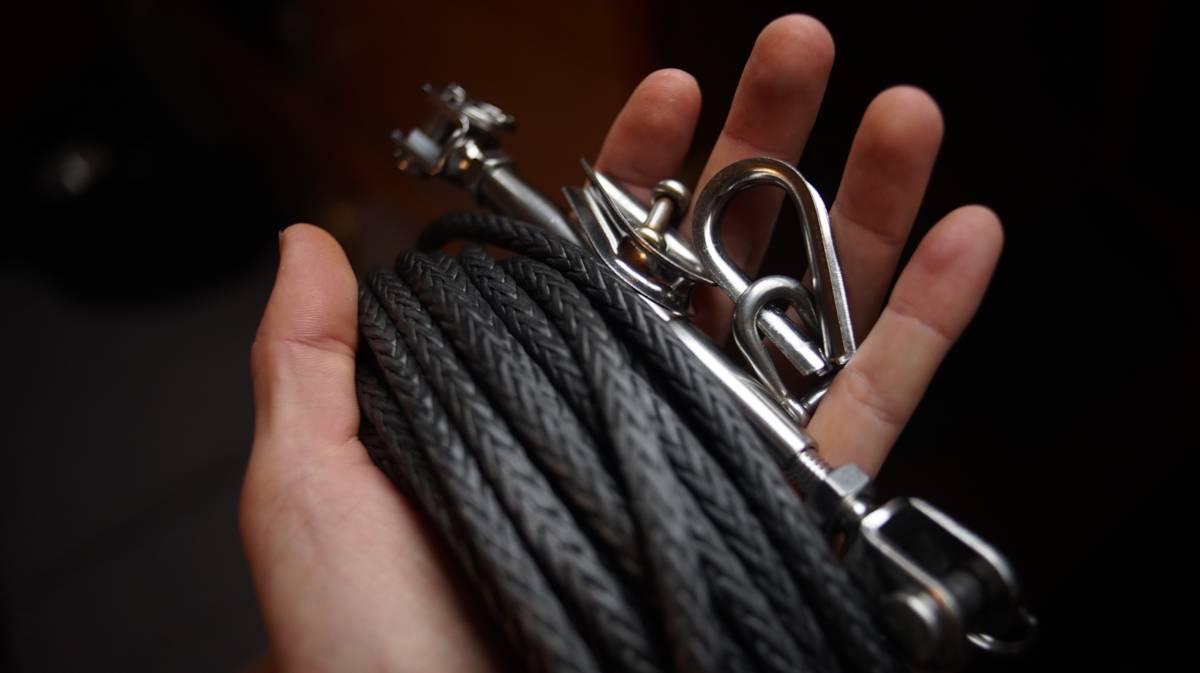
Project price list
- 40mx5mm(3/16 in) Amsteel blue-black, 200$
- 16 SS thimbles(that match the thickness of the Dyneema), 20$
- 8x6.35mm(1/4 in) SS Jaw&Jaw turnbuckles, 166$
- TOTAL: 386$CAD
Amsteel ropes are a 12-strand braided rope made from Dyneema SK-75 fibers made by Samson Rope Technologies, which are considered a multi-purpose grade. Dyneema is a brand name for UHMWPE fibers.
2024.01.02
Victoria, BC, Canada.
The weather has been unseasonably warm, so we were able to do all of the work outside without freezing. At this same time last year we had snow on deck. We are not glad for this weather abnormality, but it did permit us to finish this outdoor project.
Note. A good set of fids is necessary to make lifelines with Amsteel. Keep in mind that this material will stain your hand black.
One end of the lifeline will be terminated by an eye splice, the other by a Mobius Brummel Eye Splice(YouTube), which will use a single tail since it's not possible to pass a second tail through.
The tail that will be buried has to be as long as 2 fid lengths for non-standing rigging, and 3 1/2 fid lengths for standing rigging. Note that these are an absolute minimum. Recent testing indicates "the buried tail must be at least 63 (and some recommend 72) times the diameter of the line,"[Source(PDF)] which is longer than previously recommended and typically used in practice.
The term “fid length” refers to a “full fid length” which is generally accepted to be 21 times a rope’s diameter. "If you are using fids for your measurements, you must be sure to account for the type of fid you are using." A full 5 mm fid is 10.15 cm(4 in) long).
Since our rope is 5 mm, the minimum tail length would be 20.30 cm long, while the ideal length would be 36 cm(72x5mm).
A tail that is too short can weaken a splice, Amsteel is a very slippery material. It is better to make the tail too long than too short.
Length of lifeline. Since the material has some creep it is better to make it 5-7 cm(2-3 in) shorter to allow for some stretch.
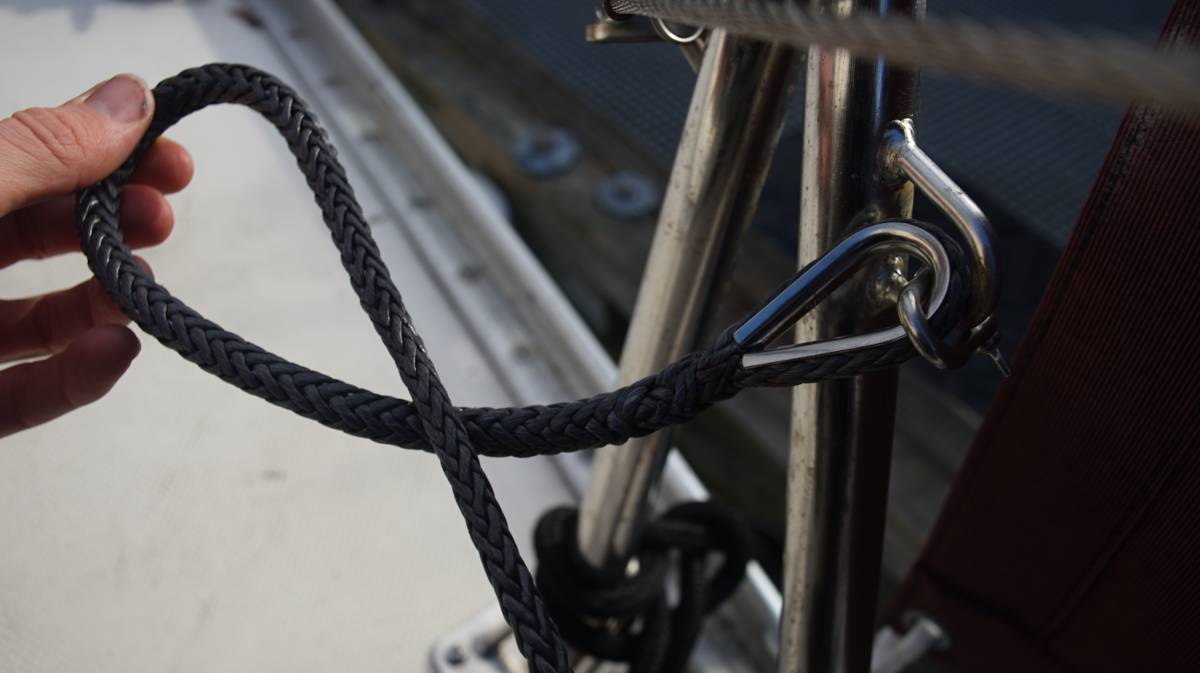
If planning to race your boat, keep in mind that some racing authorities don't allow the use of HMPE rope for lifelines. In all though, this material has been thoroughly tested, just as long as it has chafe protection in the right places, and that the splice is good. Note that in all cases, when connecting the line to the pulpit the length of the lashings ought to not exceed 10 cm(4 in). In their guidelines, World Sailing states that 5mm is the recommended minimum(PDF, World Sailing Offshore Racing Regulations) for boats larger than 8.5m. Boats smaller than this can use 4 mm.
Advice for fitting synthetic lifelines:
- Spliced lines. Synthetic materials need to be sliced, the material is too slippery to make a good knot with.
- Thimbled eye splices. Use thimbles with the eye splices, the curve created by the thimble is kinder to the line than a sharp bend.
- Thick lifelines. As big as possible, to get at least 2 times more breaking strength as the SS it is replacing. Larger diameter is also more pleasant to hold.
- End fittings. Attached hardware ought to have a minimum of 5/1 bending ratio.
- Chafe protection. Add sacrificial covers where the line passes through the hole in the stanchion post, especially if the stanchions are hollow with a sharp edge (not the case for ours).
- Frequent Inspection. Like all hardware, these should be looked at often for chafe and general degradation.
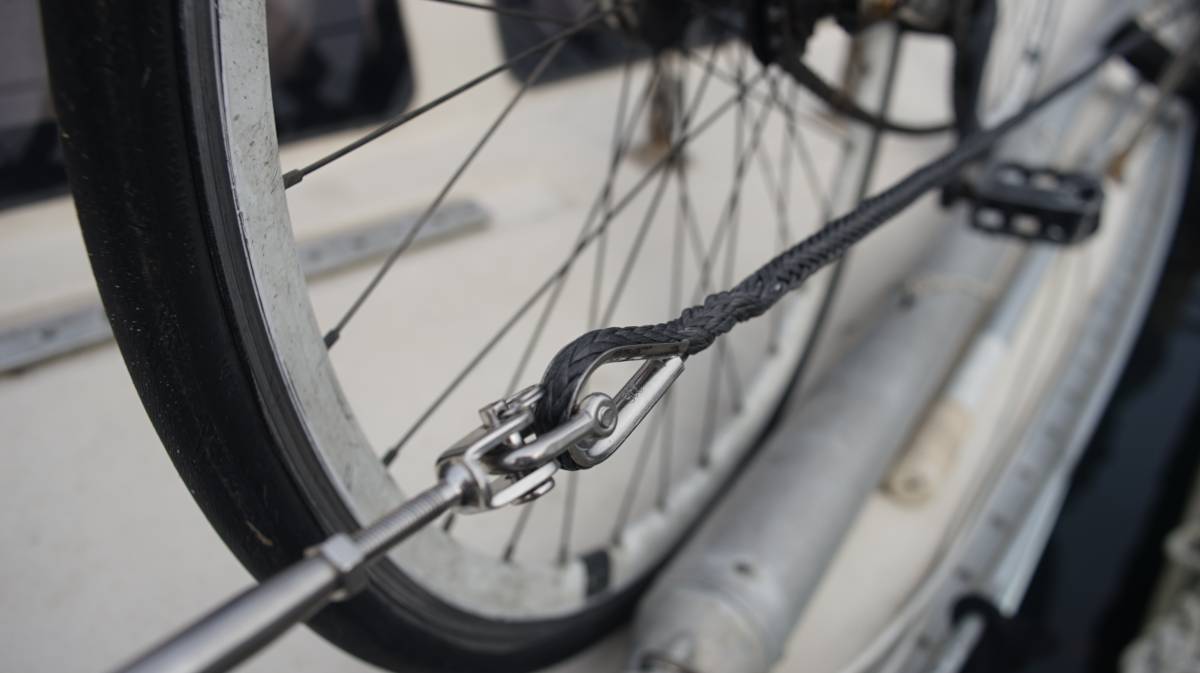
UV Resistance? Supposedly, lab tests have shown that synthetic rope sees more UV damage initially but then becomes opaque to UV, the material forms a protective layer and the rate of UV damage goes down to near nothing after a short time in the sun. (We are looking for information about those lab tests to link here.)
Chafe? Rigging Doctor wrote an excellent post on How much chafe is too much. The most common cause of failure is chafe through the stanchion holes, accelerated by burrs, which can be artifacts from manufacture or the result of wires rubbing over a long period of time. Ensuring that the stanchions holes are smooth is essential to a proper Amsteel lifeline installation. Since we've just installed ours, it'll be a long while before we can advise personally on this.